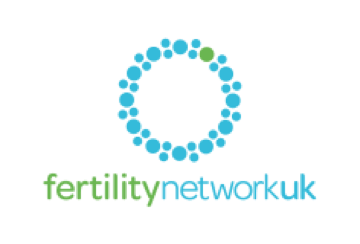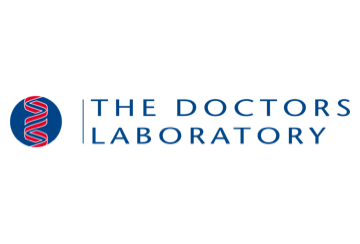Frozen Embryo Transfer (FET)
The transfer of a previously frozen embryo into the womb can allow you to get pregnant during your natural cycle, and help you start your adventure into parenthood. This process is called a frozen embryo transfer, or FET for short.
Discover everything you need to know about a frozen embryo transfer (FET) at IVF Matters.

How does a frozen embryo transfer work?
A frozen embryo transfer is when a cryopreserved embryo — an embryo that is kept in storage following a round of ovarian stimulation and sperm injection or insemination — is placed back into the body after thawing.
Once the fertilised embryo is placed into the womb, you’ll be given a date to take a pregnancy test to see if the embryo has taken.
The FET procedure itself can take around 15 minutes to be completed. But from start to finish, a FET cycle can take between 6–8 weeks.
If you have embryos that have been stored at another clinic, we can transfer them over to us and take over your care. We’re able to do this for clinics in London, anywhere in the UK and even globally.
What is the frozen embryo transfer process?
The FET process is relatively simple, and can be performed in a natural cycle, without the use of medication, or in a medicated cycle.
The process starts with a consultation with the clinic and some scans to ensure that your body is ready to begin. As the embryo already exists, this treatment does not involve stimulation of the ovaries or egg collection.
Two weeks before your period is due to start, you’ll need to come into the clinic and discuss your treatment plan with one of our fertility consultants. You’ll then have some ultrasound monitoring scans to check when your uterus is ready for the transfer.
The embryo needs to be thawed before it can be implanted, and will be done so on the day of the transfer. It is then implanted in the uterus using a soft catheter and under ultrasound guidance.
The procedure doesn’t require you to go under any anaesthesia, as it shouldn’t be too uncomfortable for you.
When you have a FET, there are two options: a natural cycle FET and a medication-controlled FET.
Natural cycle FET
In a natural cycle FET, your uterine walls will be left to thicken naturally as they would during your regular menstrual cycle. We will check on your cycle and the thickness of your uterus through ultrasounds so that we know when to trigger ovulation.
Once ovulation has been triggered, the embryo transfer will be completed around one week afterwards. You may be offered progesterone during the second half of your cycle, but this will depend on your personal treatment plan.
Medication-controlled FET
Sometimes, a medication controlled FET will be recommended to you. This may be offered if your cycle isn’t very regular, as it allows us to time the embryo transfer more accurately.
Hormone medication will be used to enable your uterus to develop in thickness when needed, and we’ll check it regularly through ultrasounds. Once the uterus is at the right thickness, then we can start the second part of your hormone medication and complete the FET about one week afterwards.
The medication-controlled FET shouldn’t take you any longer than a natural cycle, but it will depend on how quickly your uterus thickens.
How much does a frozen embryo transfer cost?
At IVF Matters, we believe that financial stress shouldn’t stop you from pursuing your dreams of having a baby. We’re proud to offer fertility treatments like FET at affordable prices.
Frozen embryo transfer – £2,499
This cost includes:
- HFEA fee
- Nurse consultation – you’ll discuss your options and the treatment itself
- Cycle management – whether you go for a natural or medication-controlled cycle, we’ll be there to support you
- Ultrasound monitoring – we’ll check the lining of your uterus to see when it’s ready for the embryo
- Thawing of embryo
- Embryo transfer
- Consultation with a nutritionist or counsellor*
*First cycle of treatment
There may be additional charges as well if you need further treatment during this process.
Additional charges as applicable:
- Assisted hatching ‒ £699
- Embryo glue ‒ £349
If you have any questions about what the cost of your treatment covers, please don’t hesitate to ask us at any point in the process.
What to expect after frozen embryo transfer
After the embryo has been transferred, you’ll most likely be wondering when you’ll find out if you’re pregnant. The process can take a little bit of time, so here is a day-by-day breakdown for you:
The embryo will begin to divide in cells and hatch out of its ‘shell’.
The embryo will then start to stick to the uterine lining. This part is extremely important – if it doesn’t happen, then you won’t become pregnant.
The embryo will still keep attaching itself to the lining of your uterus – allowing implantation to start. You may experience some light spotting or bleeding, but it doesn’t mean that implantation has failed
The embryo continues to attach deeper to the lining of your uterus and will now be connected to your endometrial blood supply. Again, you might see some spotting or bleeding around this time.
The embryo should now be fully implanted and start to develop into a foetus.
Your placenta will start to release human chorionic gonadotropin (hCG). This hormone is what will show up on a pregnancy test and give you a positive result.
The embryo should now be fully developed into a foetus and more hCG will be released into your body.
How successful is frozen embryo transfer?
At IVF Matters, we have a FET success rate of 75%, which is double the national average for UK clinics.
The quality of the embryo along with the expertise and skill needed to perform this procedure determine whether the treatment will be successful.
The older a woman is, the success rate can slightly decrease. However, that isn’t to say that older women don’t have successful pregnancies after completing a FET.
To improve your chances of a successful transfer, try to maintain a healthy weight, eat for fertility and nutrition, and get enough sleep. You want your body to be in optimal condition so that the embryo has the best chance of attaching itself to a healthy uterus.
Our fertility consultants will be able to provide you with further advice throughout your journey to give you the best chance possible of conceiving. Our team is made up of well-reputed specialists in fertility, andrology, nutrition, counselling, weight management, endocrinology and genetics.

Frozen embryo transfer risks
As with any fertility treatment, there are always going to be some risks and the chance of complications arising. Some of the most common risks when having FET treatment include:
- Multiple births
- Ectopic pregnancy
- Miscarriage
While every care is taken before, during, and after the process, it’s impossible to eliminate the risk of these happening completely.
There are some potential complications that can arise too. These are:
- Too thin of a uterine lining – sometimes the lining of your uterus won’t thicken enough for the embryo to be implanted. When this happens, a higher dose of hormones may be recommended.
- Early ovulation – while we try to time it right for the transfer of the embryo, sometimes your body will take control and ovulate unexpectedly. This means the transfer date may have to change.
- Uterine cavity filled with fluid – while this doesn’t happen too often, sometimes fluid can build up in your uterine cavity. This will make it a lot harder for the embryo to implant, so the window of transfer may have to change.
All of the risks and complications will be discussed with you beforehand so that you can make the right decision for you and your body.

Start your journey into growing your family with London’s leading IVF clinic
Over the years, we have helped thousands of couples and individuals on their fertility journey.
If you would like to find out more about frozen embryo transfer or any other of our fertility treatments, get in touch with our team today.
We offer free 15-minute advisory consultations to anyone looking to explore their fertility options. This free call is the perfect opportunity to ask any questions you may have and gain confidence in making the right decision regarding your fertility options.
Introducing
Buy Now Pay Later
Payments in instalments. No credit checks! Quick applications! Select at checkout
Working with






